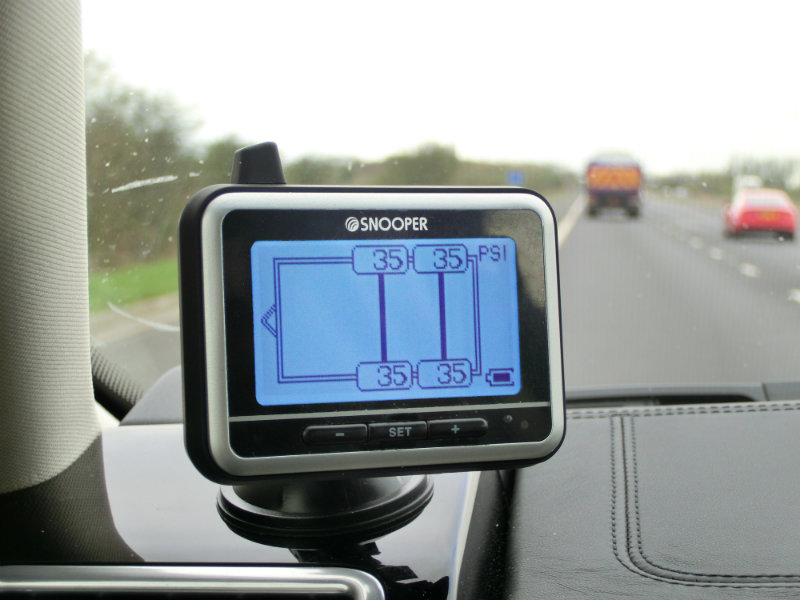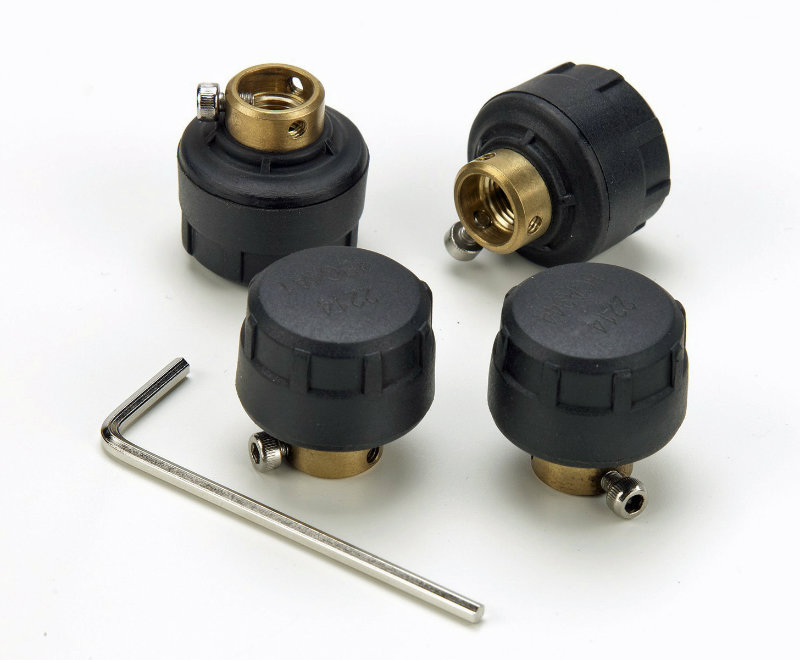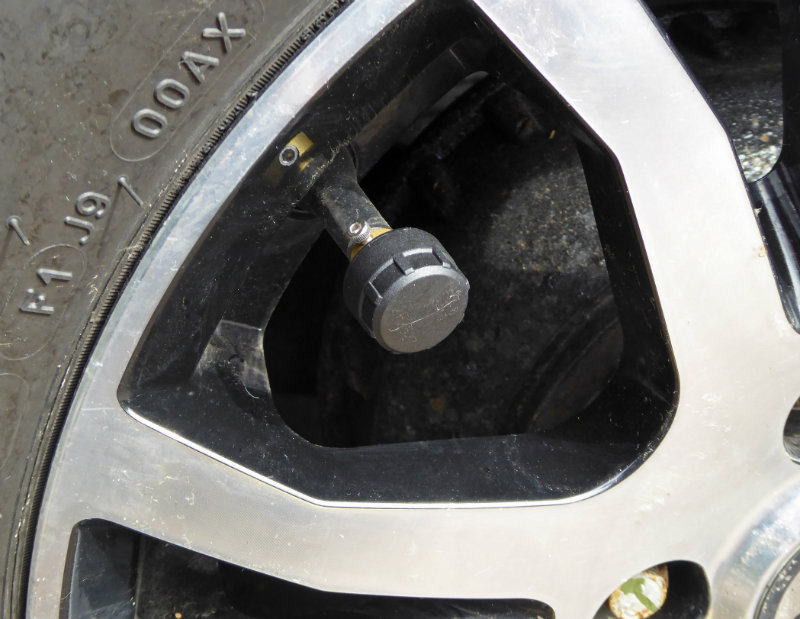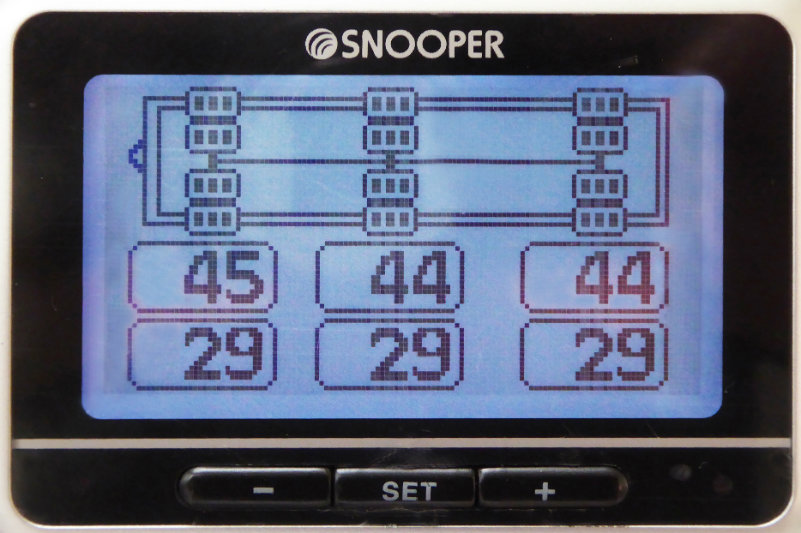Tyre Pressure Monitoring Systems: Why you should have one
More caravan accidents are caused by tyre failure than any other single factor. That’s why having a tyre pressure monitoring system is so important.
Witten by Terry Owen
Advances in electronics over recent years mean that tyre pressure monitoring systems (TPMS) are now relatively cheap and easy to fit, not just to cars but to caravans too. Indeed, tyre pressure monitoring has been a legal requirement on all new cars from 1st November 2012.
In August 2015 Bailey caravans became first UK caravan manufacturer to add tyre pressure monitoring as a standard feature on some of its models (Pegasus and Unicorn). Sensors are pre-installed inside the wheels and the owner just has to buy the monitor unit.
The good news is that, if your caravan doesn't have sensors fitted, you can easily add them yourself. This is because a new type of sensor that replaces the valve cap is now available. You simply screw the sensor into place and, as it seats, it depresses the valve allowing the pressure to be sensed but preventing the air from escaping.
Each sensor contains a tiny battery and electronics that use low frequency radio waves to transmit pressure and temperature information to a receiver in the car. During our research we learned not all valve sensors are the same. Some smaller ones do not have enough power to transmit reliably form the caravan to the car. This type is designed purely for use with the car.
If you buy a system it's therefore important to state you need it for use with a caravan. We chose the Snooper Tyre Pilot STP116 system. This can monitor various vehicle combinations including a single tow vehicle with up to 10 wheels plus a trailer with up to 12 wheels.

Above: Tyre pressures on the towcar
Along with the monitor we chose eight sensors, four for the car, and four for the twin axle caravan. We checked the pressure in each tyre to make sure it was correct before fitting the valve sensors. Screwing the sensors into place was a piece of cake although tightening the grub screws that lock them into place did prove a bit tricky.
Fitting
Next we had to set up the monitor for our vehicle combination. We chose a towcar with four wheels and a trailer with up to twelve. You select the wheel position on the monitor and then pair that position to the valve sensor. There are two ways of doing this. The first (known as LF) is by pressing buttons and holding the bottom of the monitor next to the sensor to be paired. Once paired, you press the 'Set' button to store the setting. We had to have several goes before we got this right. The answer is to read the instructions carefully and to follow them to the letter!
The second method (known as inflation), we found a little easier. This involves selecting the wheel position on the monitor and then screwing the sensor into place. Even so you do have to remember to save the setting by pressing the 'Set' button.

Above: Valve sensors showing the locking grub screws and key

Above: The sensors are hardly noticeable once fitted
The 12 possible wheel positions on the trailer did seem a little daunting but you simply select the four you want to use and, once saved; only those four are displayed.
Once paired you can go into additional menus to set the points at which the monitor will alert you of abnormal conditions like low or high pressure or high temperatures.

Above: High and low pressure warning settings
We liked the fact that you can set these on an axle by axle basis as our towcar has higher pressures at the rear than front, when towing.
The monitor comes with a suction cup for windscreen or dash mounting and an internal, rechargeable battery and will last up to 60 hours in normal use. This is handy as it means you don't have to have messy cables on show and can place the monitor wherever convenient.
In the unlikely event it does go flat just when you don't want it to you can power the monitor from a cigar lighter socket via the USB adapter and lead provided.
On the road
Before setting off the system had gone to sleep as no motion had been detected. However, as soon as we got going, the sensors began to register. It took a couple of miles for them all to show but, once in, they didn't miss a beat. The screen alternates between the towcar and caravan. It was fascinating to watch as the tyre pressures slowly increased a few PSI as the tyres warmed up.
To see the temperatures you press the 'Set' button. This was revealing on one occasion when we ended up with a car tyre pressure somewhat lower than it should have been but not low enough to trigger the alarm. You could see that the tyre was running a few degrees warmer than the others. It was enough to persuade us to pull into the next service station and put it right.
Conclusion
Once you've lived with a tyre pressure monitoring system you won't want to be without it. You soon stop staring at the screen every couple of minutes and learn to trust the fact it will alert you early if something is wrong. In the case of a puncture this could make the difference between getting to a safe place or not.
When towing a twin axle caravan it's perfectly possible to have a deflated tyre and not know about it - until the second tyre fails through overload. A TPMS system should give you plenty of warning in this type of situation.
For the peace of mind it delivers we think Tyre Pilot is worth every penny (see pricing below).
Tyre Pilot costs:
£100 for the dash-mounted monitor and two sensors (single-axle caravan)
£150 for the dash-mounted monitor and four sensors (twin-axle caravan)
£200 for the dash-mounted monitor and six sensors (towcar and single-axle caravan)
£250 for the dash-mounted monitor and eight sensors (towcar and twin-axle caravan)
Alternative Tyre Pressure Monitoring Systems








Recent Updates
Caravan showers: all you need to know
In this guide, we’ll discuss the different types of showers, how they work, and how to fit an external shower point to your caravan ...
Caravan towing: all you need to know
Towing a caravan may seem daunting initially, but a few simple tips can make the journey enjoyable and ...
All you need to know about towbars & towballs
Flange, detachable, swan neck, retractable – towbar technology choice is bewildering. Don’t worry. We’ll ...
Caravan WiFi: everything you need to know
Caravan holidays are the ultimate way of getting away from it all, although we sometimes need a link to the ...
Caravan insurance: all you need to know
Navigating the world of caravan insurance can feel like a daunting task. Fear not, as this comprehensive ...
Buying a caravan: what you need to know
Let us guide you through some of the complicated things to think about when first looking at buying a ...
Caravan awnings: a buyers' guide
Caravan awnings are a fantastic addition to any caravan as they are one of the simplest, quickest and most ...
Caravan electrics: avoid tripping out
All caravan owners have overloaded their mains supply at some time. Here’s how to master caravan electrics ...
Caravan heating systems: a quick guide to caravanning warmth
When winter is here, you’ll be glad of a decent caravan heating system if you’re out touring. Here’s how the ...
Caravan damp: a complete guide
There's little more guaranteed to strike fear into the heart of a caravan owner than the word 'damp'. But if ...
Other Articles
Caravan jockey wheels: the definitive guide
A well-functioning caravan jockey wheel can make all the difference to manoeuvring away from the towcar, especially if you don't have a caravan mover ...
Caravan cooking recipes
Caravan cookery inspirational ideas. No need to stress out in the kitchen with these quick and easy ...
Caravan bike racks: a complete guide
Exploring the beautiful surroundings while on a caravan trip is undeniably one of the greatest joys of the ...
Caravan solar panels: all you need to know
Whether you dream of roaming off-grid or just fancy reducing your carbon footprint, fitting solar panels to ...
The ultimate guide to caravan layouts
Choosing the right layout or floorplan of your caravan is an all-important part of the buying process – find ...
A guide to seasonal caravan pitches
Our in-depth guide to finding and securing seasonal caravan pitches on your favourite campsite ...
Caravan weights and payloads: a quick guide
The terminology of caravan weight – MIRO, MTPLM, noseweight, kerbweight, payload, weight plate upgrade – is ...
The ultimate guide to caravan motor movers
Caravan motor movers: everything you need to know about remote control caravan manoeuvring ...
Caravan cleaning: All you need to know
Whether you’re taking the caravan out for the first time or it’s just in need of a spruce up, our guide will ...
18 essential items for camping with your dog
Camping is for the whole family – including our four-legged members. Here's what you'll need to keep your dog ...